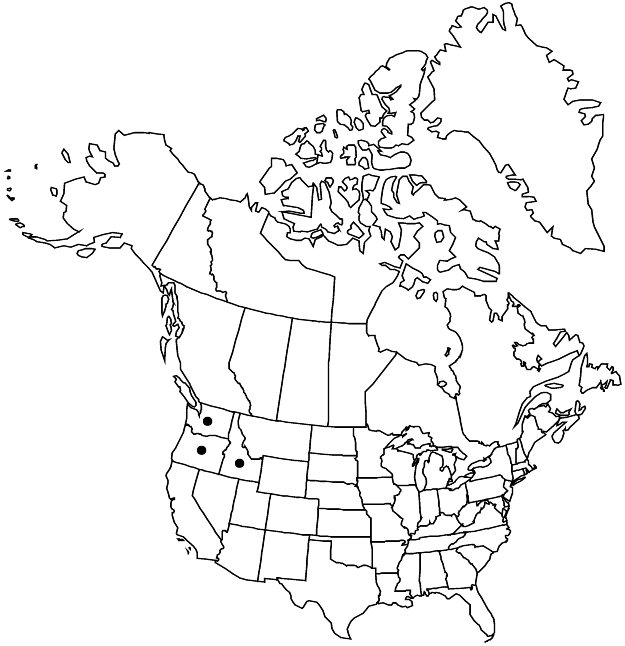Eriogonum umbellatum var. devestivum
Great Basin Naturalist 32: 115. 1972.
Herbs, spreading mats, 1–3.5 × 2–6 dm. Aerial flowering-stems erect, 1.5–2.5 dm, thinly floccose or glabrous, without one or more leaflike bracts ca. midlength. Leaves in loose rosettes; blade broadly elliptic, 1.5–3 (–4) × 1–1.5 cm, glabrous on both surfaces at full anthesis, margins plane. Inflorescences compound-umbellate, branched 2–4 times; branches thinly floccose or glabrous, without a whorl of bracts ca. midlength; involucral tubes 2–3.5 mm, lobes 1–2.5 mm. Flowers 4–7 mm; perianth bright-yellow.
Phenology: Flowering Jun–Sep.
Habitat: Sandy to gravelly flats and slopes, sagebrush communities, montane conifer woodlands
Elevation: 800-1800 m
Distribution

Idaho, Oreg., Wash.
Discussion
Variety devestivum is a glabrous-leaved expression obviously related to var. ellipticum. It is infrequently encountered in Asotin and Columbia counties, Washington; Baker, Grant, and Union counties, Oregon; and Ada, Adams, Blaine, Lemhi, Valley, and Washington counties, Idaho. The plants are bright and showy and would be attractive in the garden.
Selected References
None.
Lower Taxa
"dm" is not declared as a valid unit of measurement for this property."dm" is not declared as a valid unit of measurement for this property."dm" is not declared as a valid unit of measurement for this property."dm" is not declared as a valid unit of measurement for this property.